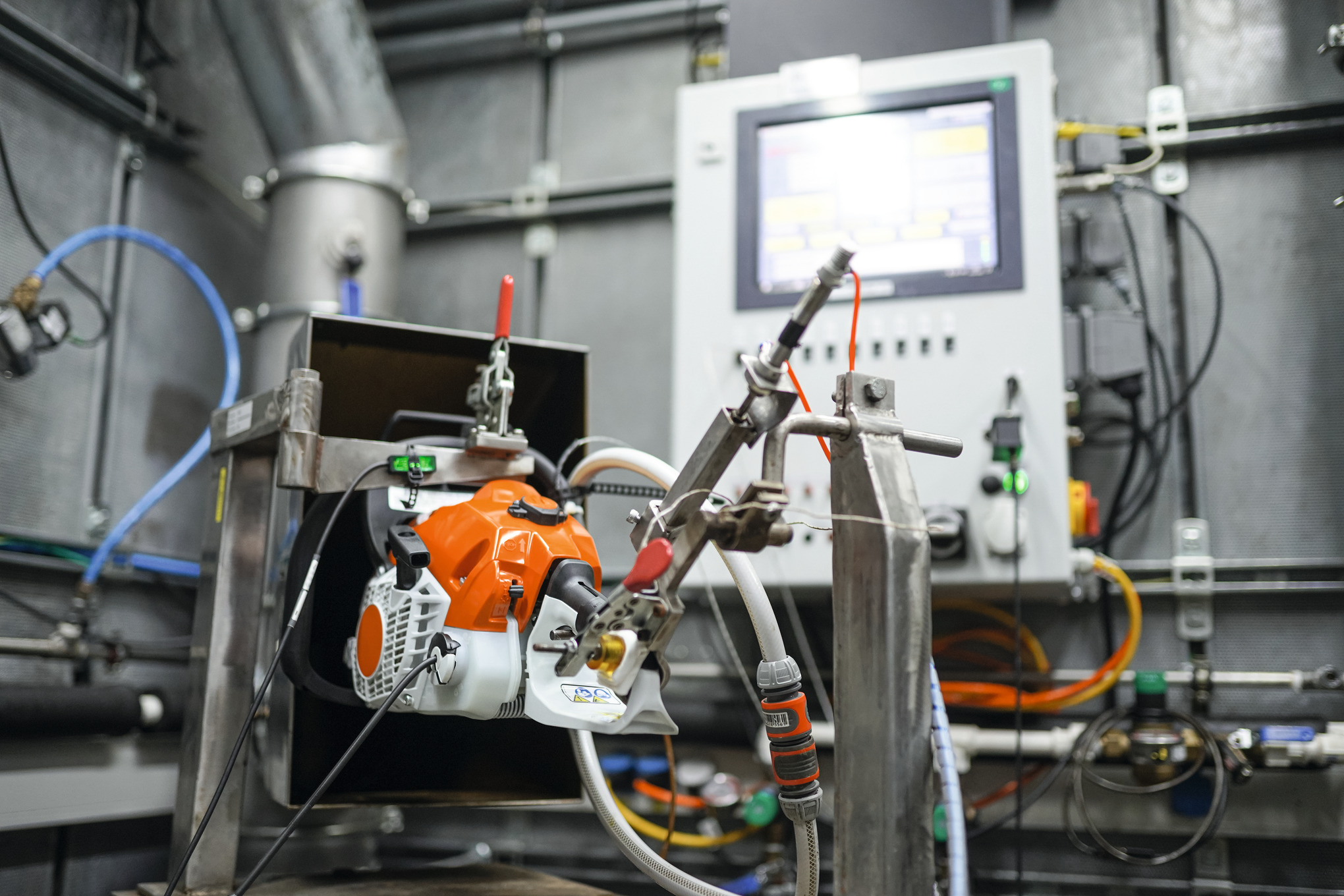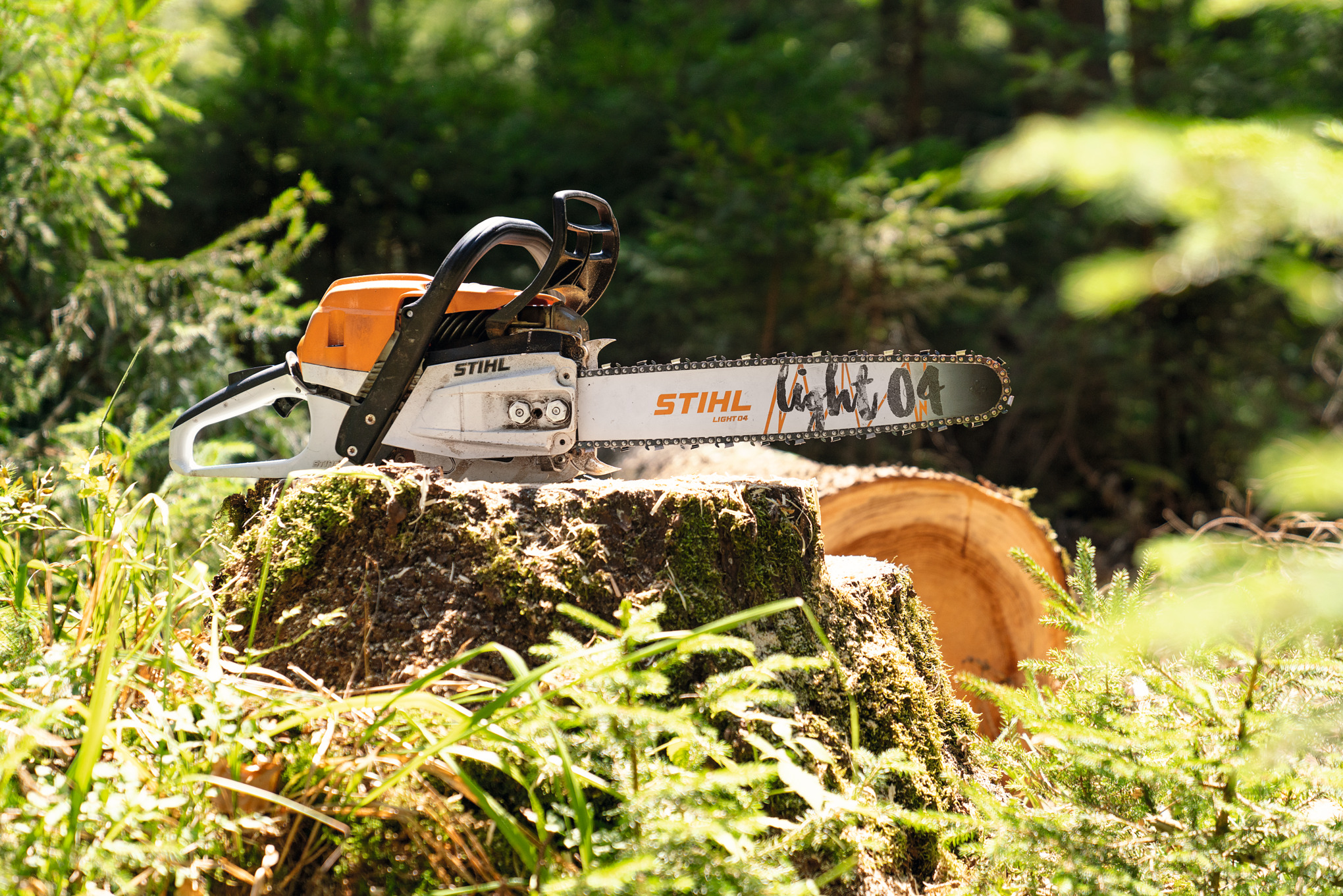STIHL 4-MIX® engine technology
STIHL 4-MIX® technology offers outstanding power in a lightweight design, and incorporates the best features of 2-stroke engines.
15.11.2024

STIHL 4-MIX®: the 4-stroke engine improved
The STIHL 4-MIX® engine has been developed in such a way that all of its functions support the user as effectively as possible. Unlike other 4-stroke engines, the STIHL 4-MIX® engine uses the same fuel mix as a 2-stroke engine – oil and petrol in a 1:50 ratio, or a ready-mixed product such as STIHL MotoMix. This means fewer parts and maintenance steps are required, facilitating a more compact design with less vibration and a very good power-to-weight ratio. The STIHL 4-MIX® engine achieves high torque with a comparatively low amount of fuel, making it a great low-emissions option. It’s also surprisingly quiet to use.
The STIHL 4-MIX® engine: how it works
The STIHL 4-MIX® engine is a 4-stroke engine that works by means of four actions, commonly referred to as suck, squeeze, bang and blow.
As the crankshaft rotates, the piston moves down in the cylinder, the inlet valve is opened and some fresh fuel mixture is drawn into the combustion chamber. Here, what distinguishes the STIHL 4-MIX® engine is the bypass channel that connects its valve train and crankcase to the intake channel. This innovative engine layout conducts the fuel, air and oil mixture to the engine components with each piston movement, meaning that the 4-MIX® engine is always perfectly lubricated and the need for regular oil changes is eliminated.
When the piston moves down, excess pressure develops in the crankcase. This conveys fuel mix from the crankcase, through the cam wheel housing and into the intake channel and then the combustion chamber, meaning all lubrication points are covered. The piston in the STIHL 4-MIX® engine moves up again and the mixture in the combustion chamber is compressed.
The mixture in the STIHL 4-MIX® engine is most compressed when the piston is at its topmost position – the upper dead centre. Shortly before this is reached, the spark plug starts the process of burning the mixture with a spark. This early ignition means that the mixture in the combustion chamber is burned efficiently and with minimal residues. Ignition also forces the piston down again, and the energy is transferred to the functional element of your STIHL product.
Before the piston reaches its lowermost position – the lower dead centre – the cam wheel opens the exhaust valve inside the STIHL 4-MIX® engine. The next time the piston moves down, the resulting emissions are forced out of the combustion chamber through the exhaust channel. And the process can start all over again.
Simple to start
Every STIHL 4-MIX® engine boasts an integrated automatic decompression system to simplify the process of starting up the engine. When you start the 4-MIX® engine, centrifugal weights are used to open a valve in the engine a very small amount; some of the compression pressure can escape through this tiny opening, meaning that you need less power to start up the engine. As soon as the starter speed is exceeded by the first operating cycle, the automatic decompression system is automatically deactivated so the 4-MIX® engine runs efficiently and powerfully with full compression.

The innovative 4-MIX® engine special design
The STIHL 4-MIX® engine is incredibly light. Because the engine is lubricated via the fuel-oil mix during operation, certain components that feature in conventional 4-stroke engines have been eliminated, such as oil pumps, oil filters and sumps. As well as making the engine lighter, the 4-MIX® design means that oil checks, oil changes and disposing of old oil are all a thing of the past.
STIHL 2-MIX or 4-MIX® engine?
Both of our flagship engine systems are innovative, powerful and extremely efficient. We’ve summarised the key features of the two systems in the table below.
| STIHL 2-MIX engine | STIHL 4-MIX® engine |
|---|---|
| Efficient fuel consumption | The power available is applied as effectively as possible |
| Lower operating costs | Can be used anywhere |
| Efficient propulsion | Very high torque |
| Compact design | Reduced pollution |
Summary: STIHL 4-MIX® engine:
- Fewer pollutants: as the fuel leaves very few residues when it combusts, the engine meets the requirements of the strict Euro V emissions standard
- No oil service required: simple maintenance because the 4-MIX® engine uses the standard fuel-oil mix
- Lightweight: as the engine is lubricated by the fuel mix, the 4-MIX® engine needs no oil pumps, oil filters and sumps that conventional 4-stroke engines include
- Lower noise level: quiet operation even when it’s working hard
- Engine power and high torque: high compression provides exceptional performance

